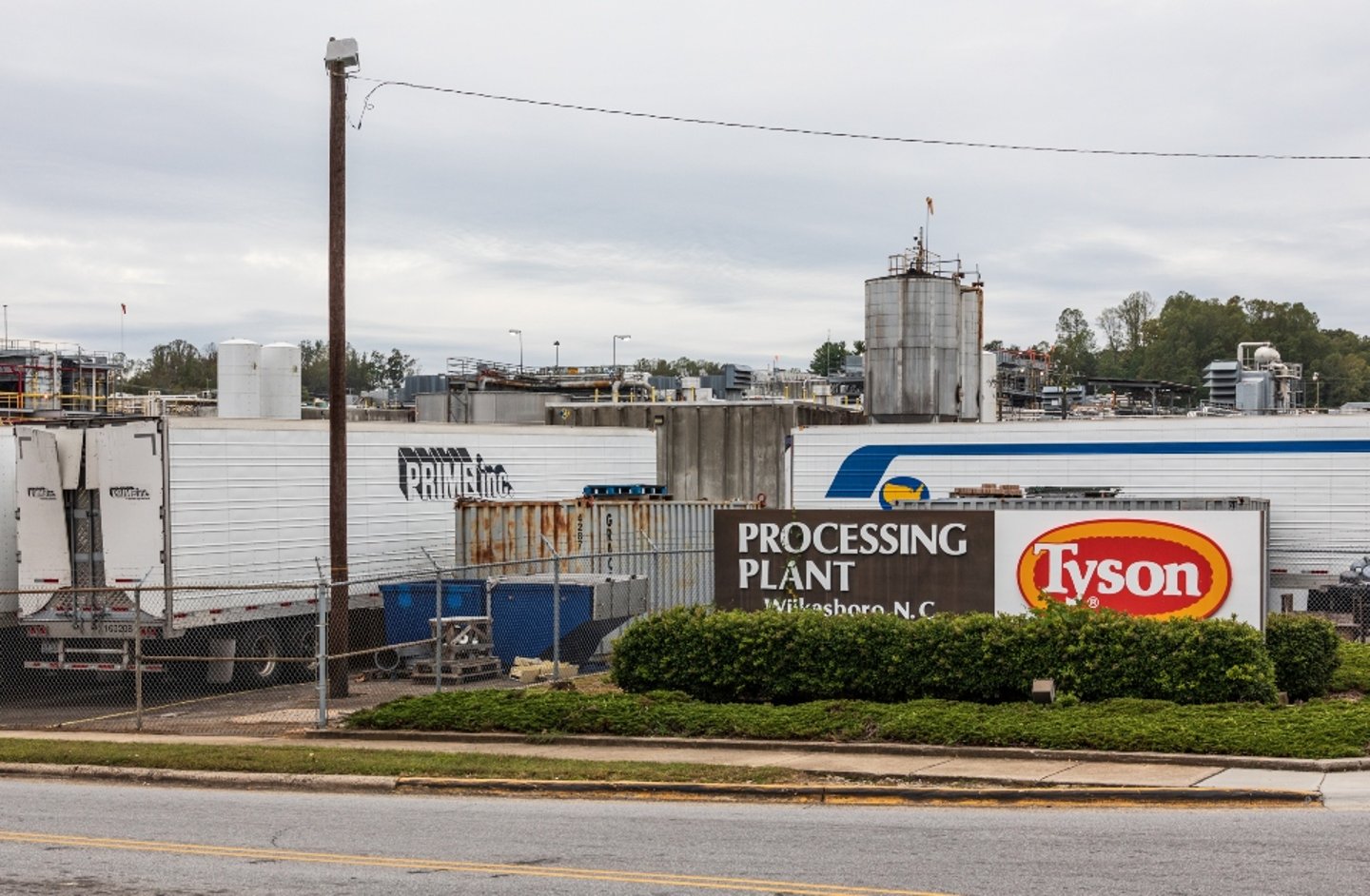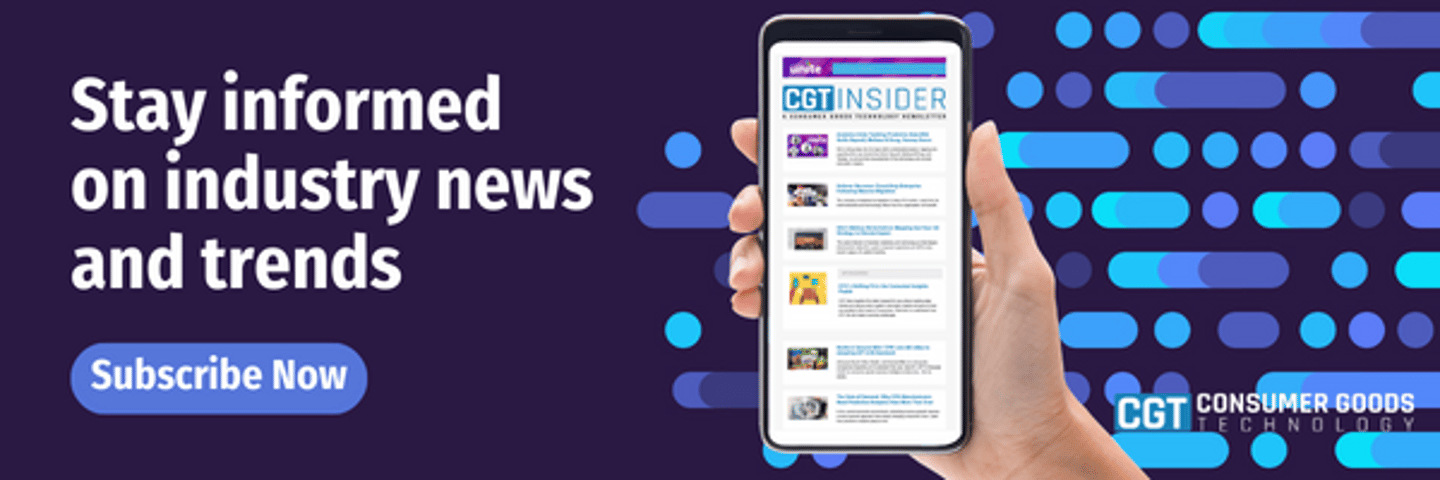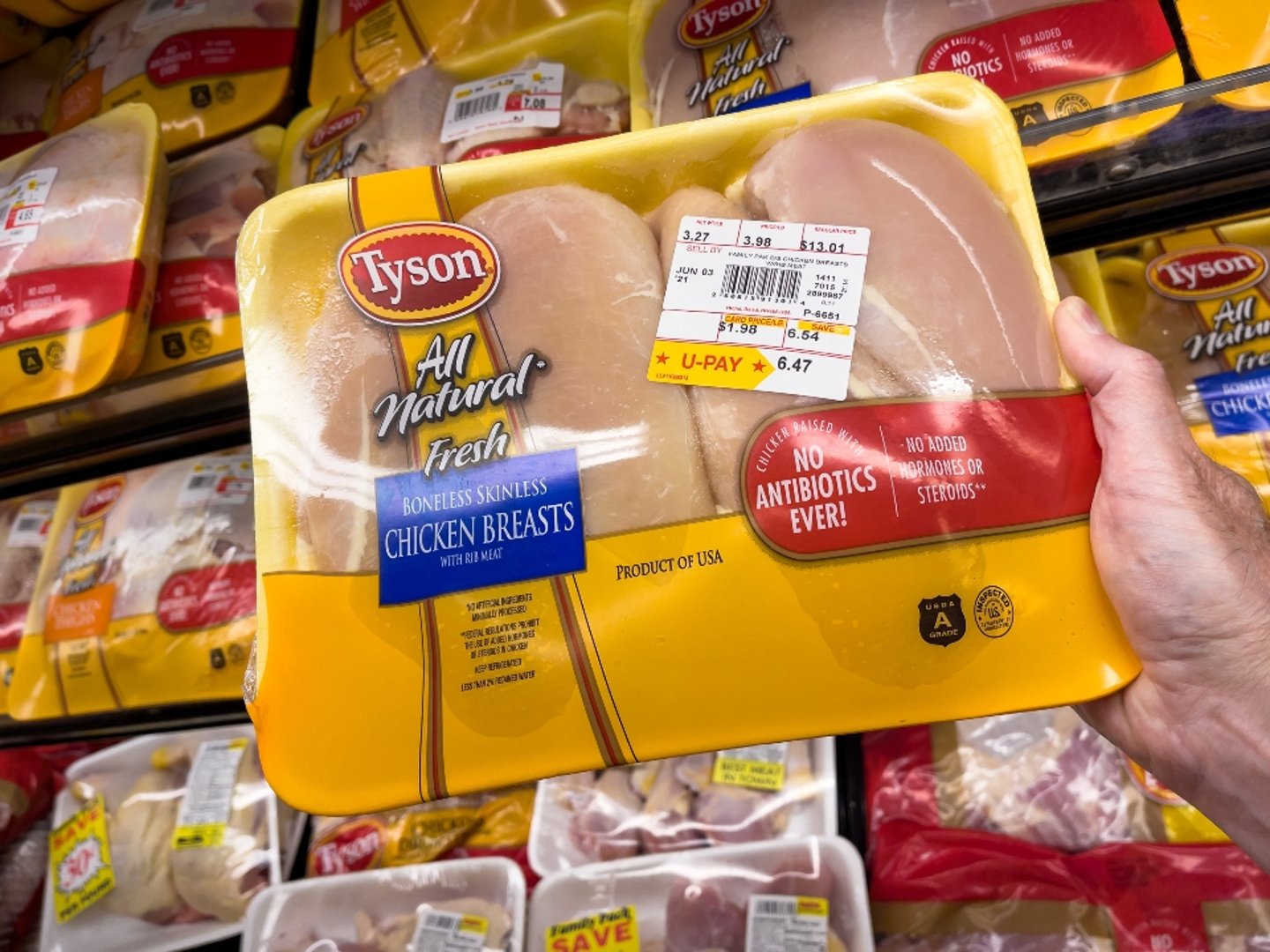Why CPGs Like Tyson Foods Are Investing In Supply Chain Control Towers
For Tyson Foods, the future of supply chain management isn’t just food for thought: It depends on automated, near-real-time insights that are easy to consume and actionable so officials can make better decisions. As part of this, the company has made significant progress toward laying the foundation for a supply chain control tower.
Right now the company is using control tower capabilities for supply chain logistics and inventory and will continue to expand into other areas in the next six to 18 months, Adam Clark, VP of IT business shared services, tells CGT.
Tyson’s supply chain control tower serves as a vehicle for serving up an aggregate of insights, KPIs, and AI-driven recommendations across all supply chain disciplines, Clark says. “Building out advanced analytic capabilities and data flows that feed the control tower is foundational. It’s an aggregate view/capability layered on and entirely dependent on the insights and intelligence you feed it.”
Having near real-time insights will drive better informed and timely decision-making, he adds. “These KPIs span demand and supply planning, distribution operations, network optimization, food safety, and team member safety.”
Tyson isn’t alone in finding value in supply chain control towers, which can be particularly applicable for the consumer goods industry.
What are supply chain control towers?
In understanding the ROI of supply chain control towers in consumer goods, it’s helpful to use Forrester’s definition, understanding that they’re applications or platforms that enable a single company or network of companies to plan and adaptively execute the fulfillment of anticipated demand.
See Also: Tyson Foods Expanding Smart Factories
Supply chain professionals are implementing control towers for a number of reasons, according to George Lawrie, VP and principal analyst at Forrester:
Boost supply chain resilience using event pipelines and predictive analytics to anticipate likely supply disruptions and engage alternate suppliers or carriers. Improved transparency alerts companies and networks to future potential shortages, enabling them to expedite logistics or invoke alternate supply options.
Improve customer service by incorporating supply chain network optimization capabilities to determine the depth and range of inventory to hold in each distribution location. This optimized distribution drives the most compelling combination of customer choice and lead time from available investment in inventory and logistics capacity.
Advance adaptability because control towers make intelligent sourcing and fulfillment decisions based on tariffs, taxes, material availability, urgency of demand, and locally available logistics. They can improve reverse logistics, catalog management, and order lifecycle. “And they help networked suppliers and customers collectively respond to unexpected disruptions,’’ Lawrie adds.
The business need for supply chain control towers is the “ability for real-time information,” says Steve Murphy, director of client services at Panorama Consulting.
“It’s equivalent to real-time business intelligence. I would consider this area ready for substantial growth” as supply chains have grown in importance in the last few years. “It’s about [having] information and how to best utilize it for the success of my organization.”
The role of supply chain control towers in CPG
While they are applicable in any industry, supply chain control towers are “extremely relevant and extremely valuable” for CPGs because they are focused on predicting demand patterns and helping with the “sustainability agenda,’’ says Dheera Anand, a partner in Bain & Co.’s consumer products and operations practices. Although many organizations are not yet doing the latter, Anand believes this will be something they focus on as they prioritize reducing their carbon footprints.
Murphy agrees that control towers are becoming more and more important to CPGs. “With AI and technological developments, the biggest shift in enterprise systems today is away from transactional data and toward informational data,’’ which is the key to success in the business world.
Control towers have been around for a long time, “but with real-time data and collaboration becoming easier, this will become more critical, especially in CPGs,” he adds.
“Like any industry, the most successful CPG businesses exhibit excellence in supply chain management,’’ says Clark. “Access to near-real-time actionable insights and machine learning-driven recommendations and alerts is crucial to achieving this. Companies that are not investing in this capability will soon find it difficult to compete.”
See Also: How Kraft Heinz’s Operating Reorientation Is Unlocking Benefits
Geoff Coltman, VP at Catena Solutions, says that control towers give CPGs the ability to predict inventory issues or future buying needs. For example, during the COVID-19 pandemic, a lot of retailers bought goods but then discovered they had excess inventory. A supply chain control tower provides the ability to move that inventory to different geographic locations. From a brand perspective, it lets you know how much to manufacture, he says.
“Control towers take data sets from a number of different places that normally wouldn’t talk to each other and … manipulate the information,’’ Coltman says. “So you have the ability now to look at all the extenuating circumstances to make decisions for your goods.
This can be everything from ERP to warehousing to transportation systems, he says. Supply chain control towers enable cognitive decision-making so decisions can be more easily made to drive faster response time.
Catena hasn’t implemented a start-to-finish control tower for any of its clients but has taken some of the steps required to get there, Coltman says. This includes taking data sets from ERP, warehouse management, and transportation management systems and putting them into a data lake so the information can eventually be used, he says.
Potential challenges
Tyson’s Clark says a successful control tower comes down to data capture, data sourcing, and data quality. “It all comes down to the data,’’ he says. “If you have good data, deploying a control tower is fairly straightforward.”
To ensure that, Tyson’s business and technical teams continue to invest in data management, governance, and streamlined data pipelines, Clark says.
See Also: Keurig Dr Pepper, 3M, Coca-Cola, P&G, and More Double Down on Digital Investments
There are some good off-the-shelf software packages that provide the ability to start building a supply chain control tower with a single source of truth from all demand data, purchase order data, and customer service orders in an organization’s systems, according to Murphy. “The problem is, you’ve got to make sure all our suppliers, customers, our distribution network, our shipping carriers — all partners [in the supply chain] have that capability as well — or you’ll have holes in the data.”
They should also ensure the data is structured in a way it can be used, Anand notes. “A control tower will only operate with the data it’s being fed, so the quality of data” is critical. “We promote starting small and expanding.”
Murphy, Anand, and Coltman all say change management can be another big challenge in implementing a control tower.
“What happens many times is we have cutting-edge technology or a different way of doing something and a CPG leader says, ‘This is the direction we’re going to go in’ and … then no one uses it or doesn’t use it in the way it was intended,’’ Coltman says. The company made a significant investment but no one has taken the time to teach employees how to use it, he says.
“Change management is a big piece of this,’’ Murphy agrees. However, he thinks the more important issue is making sure everyone inside the company and all external partners “are on the same page with our technology and have the ability to collaborate and communicate with each other.”
Anand concurs that the adoption piece is a big challenge because it is a technology that sits on top of a lot of other technologies, so there has to be a clear understanding of how to use it and who uses it.
Clark echoes that. “Investing in capabilities such as a control tower will not add value to Tyson if our team members across our supply chain disciplines are not equipped and ready to leverage them. This is why it is so critical for our business and technology teams to walk arm and arm throughout the journey.”
Another challenge is if you have a supplier that gets disrupted you have to find an alternate supplier in your ecosystem, but if you implement a control tower without alternate options, “there’s nothing the control tower can do in that situation,” Anand points out.
Organizations must include that as part of their risk management and resiliency strategies, she says.
Anand adds that control towers are “a great tool if applied right.”
Forrester’s Lawrie says that a lot of people still struggle with the idea of collaboration. “It’s hard to do because you need to be prepared to share a lot of stuff you may have wanted to keep secret, like your available inventory,’’ he says. Although sharing has been done in the past, “it’s about thinking, how can we all win?”
Determining ROI
There is an enormous cost to being both out of stock and overstocked, Lawrie says. A collaborative supply chain network approach allows you to reduce both. “It’s about synchronizing your inventory with demand.”
One way to determine direct ROI is from information about on-time delivery to customers, on-time delivery from suppliers, and the cycle time for what it takes to bring a purchase order into the organization to invoice, says Murphy. Internally, ROI can be gleaned by how efficient and productive employees are. “Improved collaboration and communication, I think, is more of a long-term thing, but we’ll be able to reduce working capital and inventory levels based on better information.”
One of the keys to measuring ROI is to set some benchmarks for current processes, Murphy adds. “Without a doubt, you’ll be able to see extraordinary increases in productivity from the increased collaboration.”
ROI can be more obvious in cases where capabilities lead directly to measurable improvement such as gains in demand forecast or minimizing distressed inventory, Clark says. “More common are the general benefits of speed to decision and better-informed decision-making.” That is difficult to quantify up front and difficult to track, he acknowledges.
“In the end, Clark says, each company needs to ask, ‘Do we believe that this capability will materially improve our supply chain management in order to justify our investment?’ At Tyson, the answer is a confident ‘yes.’”









